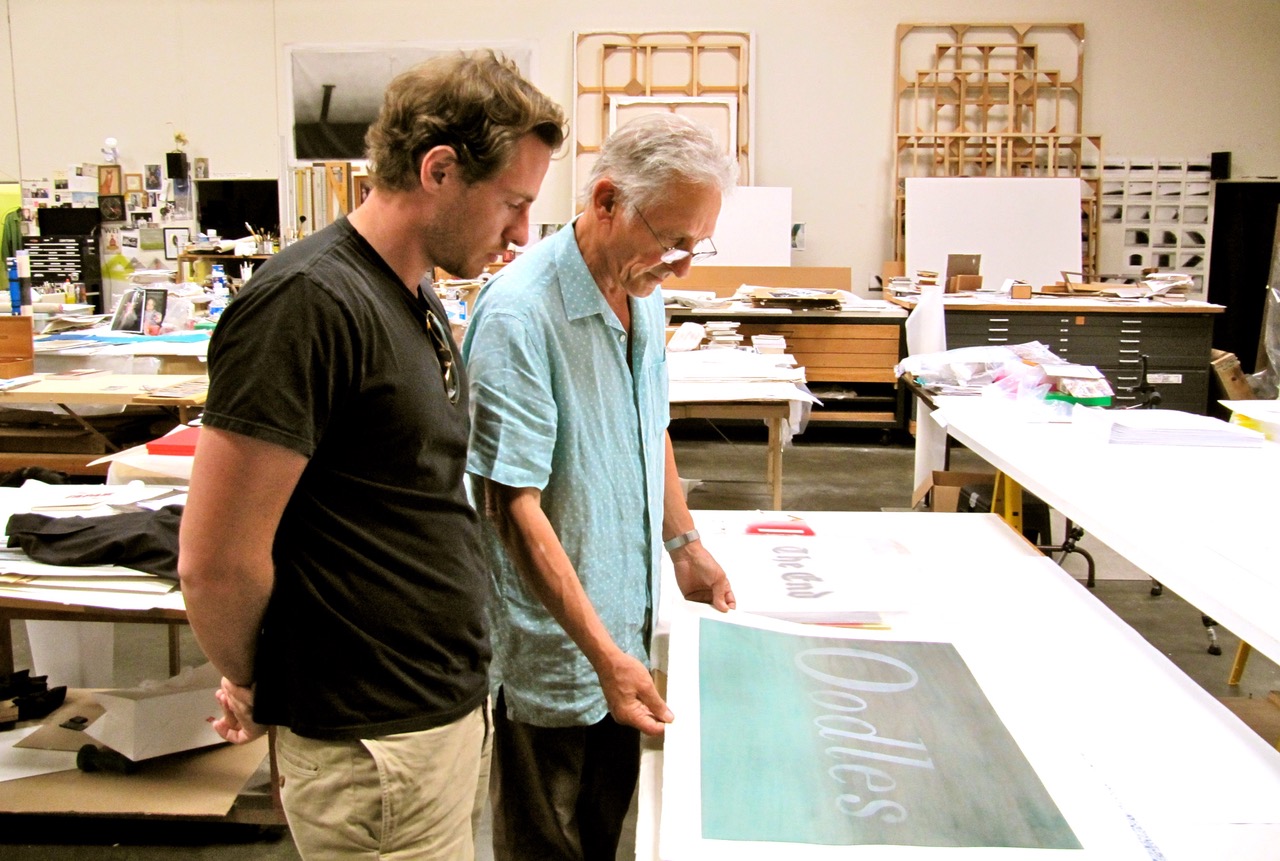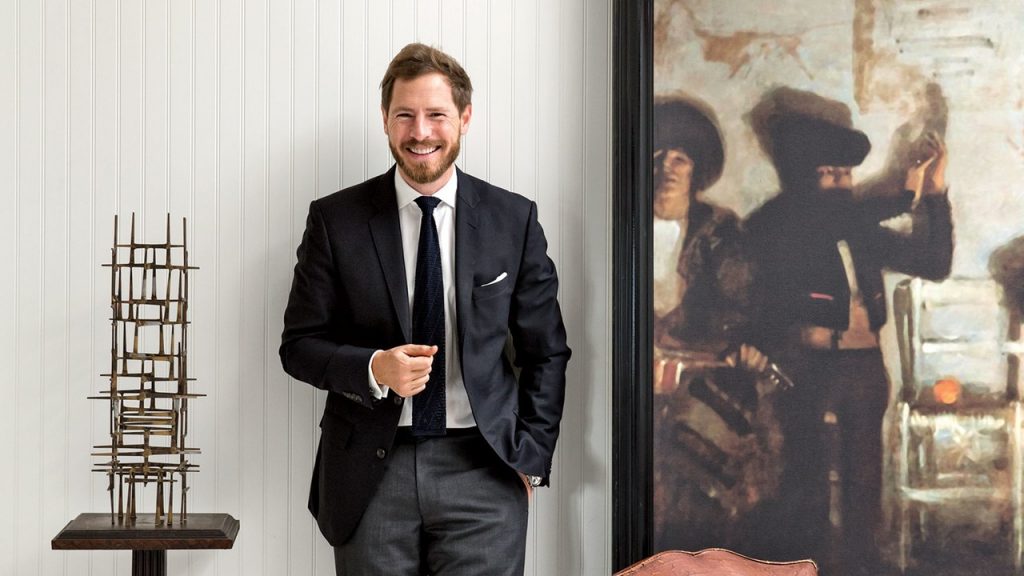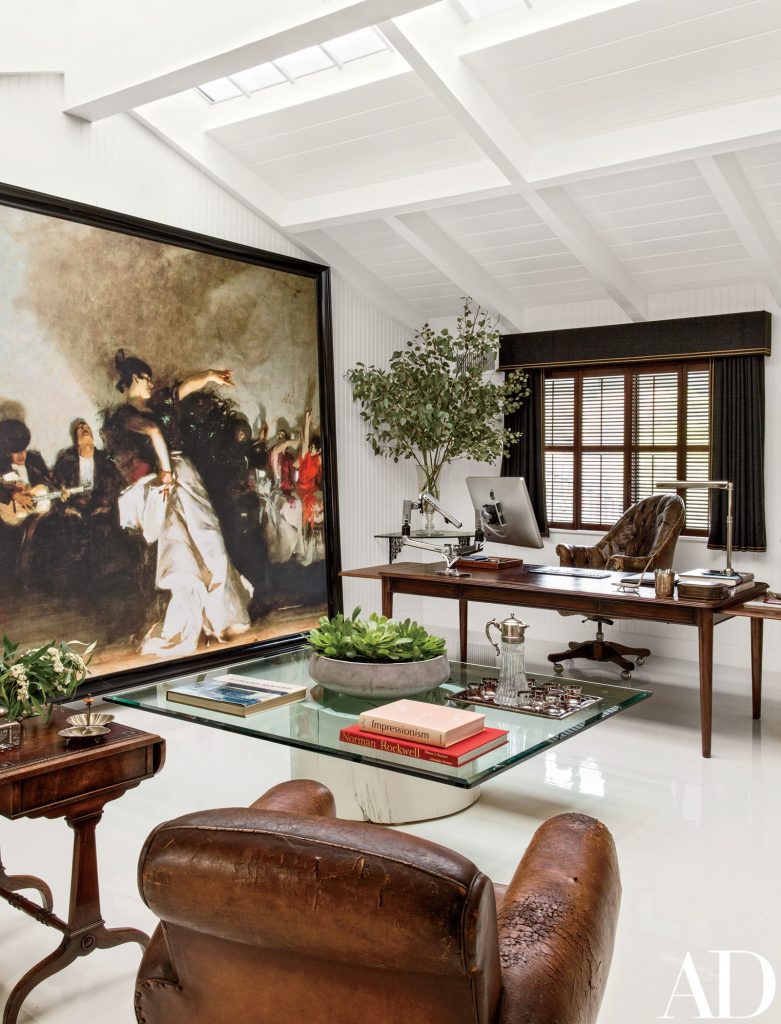← Back
Will Kopelman, Art Advisor
Interview, 1 May 2019
Under the passionate influence of his mother and father, both of whom were art history majors, Will and his sister Jill’s childhood included countless visits to some of the world’s most renowned museums, accompanying their father on his many business trips abroad. Not to mention that Andy Warhol was the family’s next-door neighbor in New York City.

His father, Arie L. Kopelman, was the President and COO of French fashion house Chanel from 1986 to 2004 and remains as Vice Chairman and member of the board to this day. During his tenure, Chanel went from esteemed fashion house to a commercial superpower, much thanks to Kopelman’s focus on expanding the brands range of accessories and fragrances.
But Will Kopelman headed in a different direction early on by venturing into the movie business and spent 15 years in Hollywood. But after his accountant strongly suggested he took his chances dealing art, he found his niche in life. A life he was unintentionally groomed for from an early age.
Today he runs Kopelman Contemporary LLC. An advisory firm dedicated to helping their clients acquire secondary-market fine art that reflect their client’s style, rather than going for the obvious.
We engaged in conversation with Will over the phone to discuss his upbringing, his career in Hollywood and why going for the hidden piece is a good idea when buying art.
How did your upbringing form your relationship with art?
– Both my parents were art history majors and that forged a long-term appreciation for it. My uncle followed in my grandfather’s footsteps by attending Harvard Law and ended up as a judge. My dad
“I always looked at the process of collecting as a marathon rather than a sprint”

Did you feel destined to make a career out of it?
– No, even though my father’s passion was contagious I never saw it as something I was destined to do. Quite the opposite. The second passion in our family was movies, so I would go to the movie theatre as often as I would go to museums. I
So how did you end up leaving the movie business?
– Well, my boss was venturing off on his own, leaving the studio, and I couldn’t really go with him at that point. At the same time, John Kerry was running for President against George W. Bush. His wife, Theresa Heinz, is my Godmother and I had helped Kerry with his campaign when he reclaimed his Senate seat in 1998. So, when his march for the presidency started heating up, he asked me to come work for the campaign alongside his step-son and my best friend Chris, to help reach the young voters and see if they could swing the election his way. And for the following six months I was out there working the campaign up until election night. I’m sure you read somewhere that he ended up not winning the presidency (laughs). So, when that ended, I was back on square one.

“My dad often took us along for his business trips to Europe and every time we came to a new city, we would go to museums. It wasn’t a question of visiting kids stores or playgrounds”
What was the next step after that?
– In 2004, the digital advertising business was just emerging, and I took a job at a firm that offered me a good deal. I spent a couple of years there and once I had a bit of money in my pocket, I started collecting art. That was sort of the genesis of my current business. This was around a very interesting time in Los Angeles affectionately called “The renaissance of Los Angeles” particularly in the contemporary art field. Everyone in the art scene there had their eye on emerging LA artists. The focus had shifted from London to a place
What is the usual chain of events when a client approaches you?
– I always looked at the process of collecting as a marathon rather than a sprint. So, I usually have a pre-existing relationship with

How did you go about selecting pieces for your own home?
– My collection is highly eclectic. There are things I found in the attic of a barn in northern Massachusetts, there are things I bought in a small village in Jamaica. There are also things I got off eBay, made by prisoners in the
I’m also very into outsider art. There is this place in Oakland, California called Creative Growth Project, an art school for the mentally disabled. These are people who are profoundly mentally handicapped, but their vision artistically is unreal. One woman who was blind constructed these sculptures and you’ve never seen anything so beautiful. I feel most artists who achieve true greatness are somehow given a handicap. Literal or figurative, whether it’s something they have or something that’s missing. Having to overcompensate for something that’s not there. As with any creative process, it’s the talent, repetition but also that chunk whittled out of your soul.
But to answer your question, when it comes to the stuff I like and collect, I always look for that special, unconventional flavor. It’s always that one piece in the corner no one notices that ends up becoming timeless. That goes for paintings, books, poetry, music – you name it.
So that “piece in the corner” is what you usually recommend your clients to go for?
– That’s exactly it. Take real estate for example. You don’t make money in real estate by buying expensive land in the most desirable area. You make money by going after undesirable land where no one would set up shop! You have to have the foresight and appreciate it for what it is while you sit on it and wait for people to want to build skyscrapers there. I saw it happen in New York City. Nobody gave a shit about downtown Manhattan when I was a kid. I went down there to listen to live music a lot and would see these huge spaces that you could drive golf carts in, and I couldn’t believe nobody wanted them. Had I had money at that time… But coming back from my analogy, I thrive off of not going after what is obvious and I believe that will pay off later. And I am very clear with my clients that this is my philosophy.

Your father was a huge factor in bringing Chanel to the forefront of the fashion industry from the 1980s and onwards. How much of your taste do you attribute to growing up watching how he worked and enjoyed art?
– His story is quite fascinating. He was a marketing guy who did all the advertising for Chanel. When it came time for him to start his own agency he wanted to continue working with Chanel, but the Parisian owners offered him to come run the company for them instead. He fell into it as an ad-guy with no experience from retail or the fashion business. He was all about messaging. It was a great case study of hiring outside of the box. Since he had gone through his business training at Proctor & Gamble, he had been taught the art of selling a bar of soap from a 360-degree angle. What’s inside, how the outside looks, packaging and what people perceive it as. All of that blended into an algorithm in his brain that he was able to apply to luxury goods once he got to Chanel. Karl Lagerfeld, the genius creator behind it all, had come on only eight months before my dad started and they did their part to build the brand together from there. At the time, Chanel had a very small business when it came to fragrances, accessories
For more please visit:
www.kopelmancontemporary.com